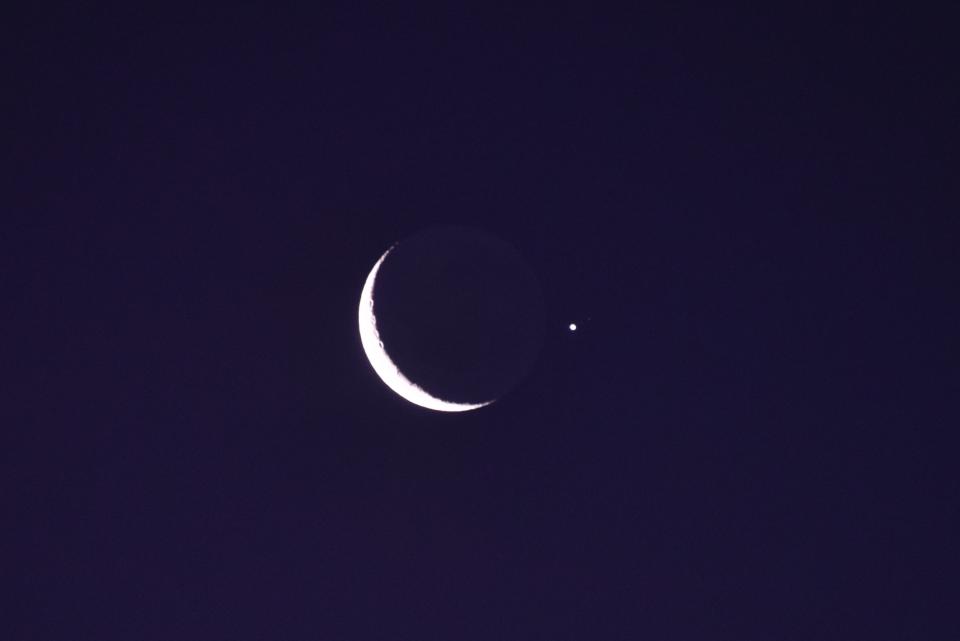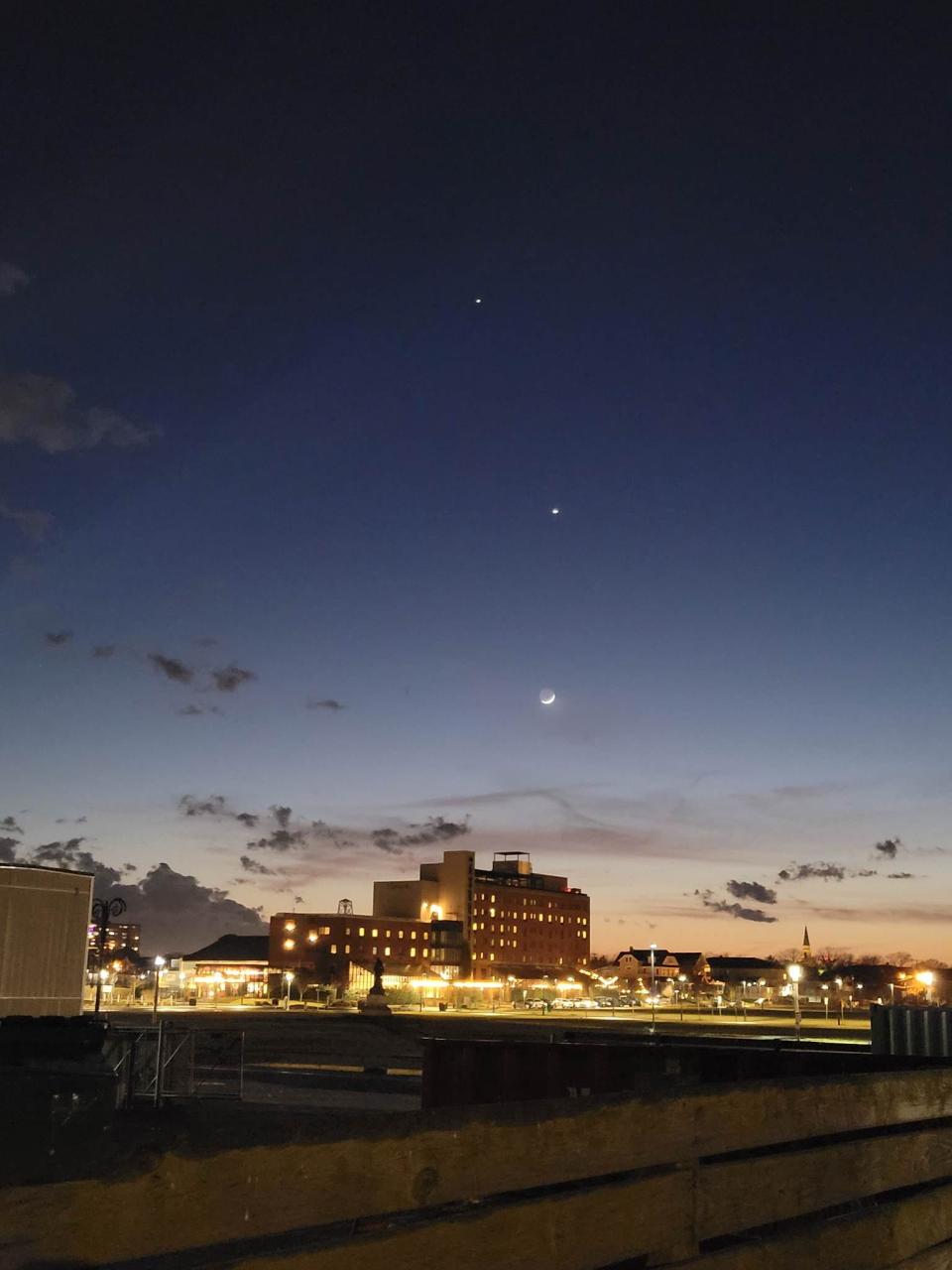Look up: the Moon, Jupiter and Venus are rendezvousing
The Moon, Jupiter and Venus have begun to appear as a group in the sky this week, according to weather experts and local astronomy buffs.

Three of the brightest objects in the sky will all be visible, the weather.com post said, with the Moon in its crescent phase.
Rosemarie Spedaliere, treasurer of the Astronomical Society of the Toms River Area (ASTRA), said events like these are often random.
The planets and moon are all moving in their individual orbits and when they converge, it is called a conjunction, Spedaliere said.
Spedaliere said she's seen a lot of people on social media confuse the visible planets with bright stars, which she quickly works to correct.
Jupiter and Venus are moving closer and closer together until they will eventually appear as a single bright point, or two points very close together, she said.
Cara Muscio, associate director of Novins Planetarium at Ocean County College, said perspective is an important part of a conjunction.
"It looks like they're next to each other, [but] they're obviously not next to each other," they said.
In reality, the planets are millions of miles apart, Muscio said.

Muscio said the moon will pass by Venus first and then by Jupiter, though the planets look very close to the naked eye.
The best view of the conjunction will be Wednesday, March 1, according to Spedaliere.
"With both of [the planets] being so bright, I'm sure we'll get calls about UFOs and all that good stuff," she said.
Spedaliere said visibility will be weather dependent, and weather reports vary. She, herself, follows multiple weather channels that all say something different.
To see the conjunction, don’t look over the ocean, she said, but to the west. On Wednesday, she recommends going outside right at twilight - around 5:30 p.m. - until the planets disappear around 8 p.m. for the season.
Looking with binoculars or a small telescope will yield the best results, she said.
"Even without, it's just going to be a pretty sight," she said.
In the event that weather conditions or your location doesn't allow you to see the rendezvous, The Virtual Telescope Project shot a livestream on Wednesday that is available for viewing.
Jenna Calderón covers breaking news and cold cases in Monmouth and Ocean counties. Before coming to the Press, she covered The Queen City for Cincinnati Magazine in Ohio. Contact her at 330-590-3903; jcalderon@gannettnj.com
This article originally appeared on Asbury Park Press: Watch the Moon align with Jupiter and Venus in the night sky

